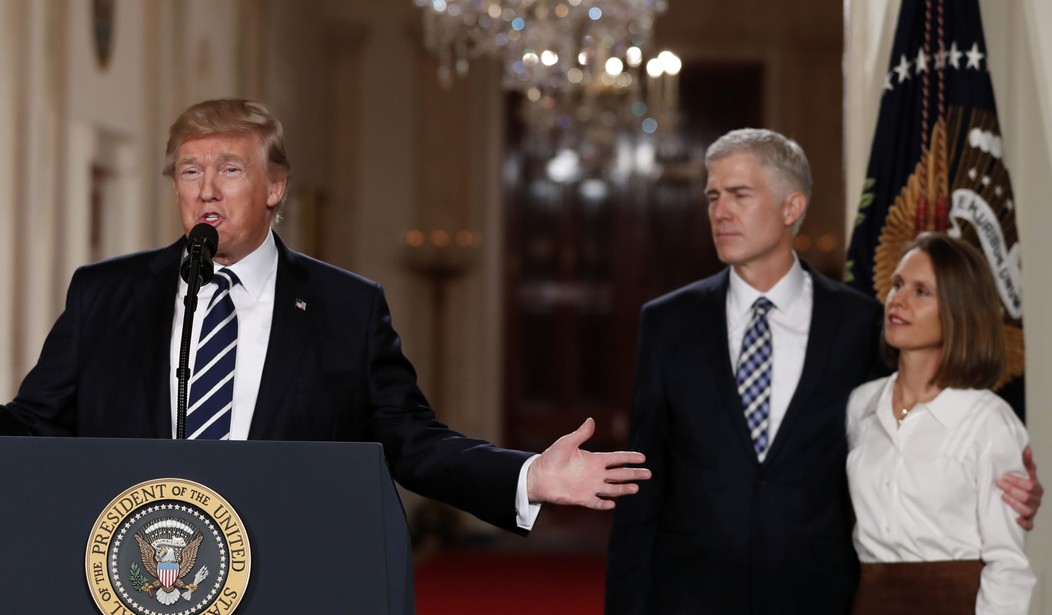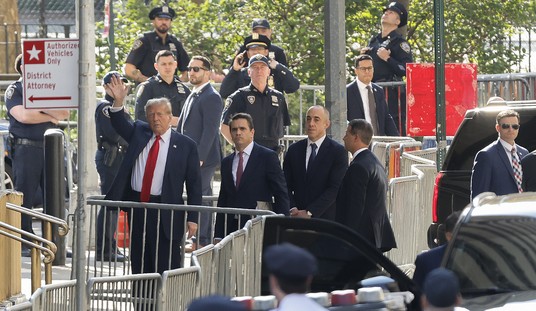On Tuesday, President Donald Trump nominated appellate judge Neil Gorsuch to serve on the Supreme Court. Trump fulfilled his pledge to select a nominee “in the mold of Antonin Scalia,” for Gorsuch seems cut from exactly the same cloth.
Like Scalia, Gorsuch is both a textualist and an originalist — he interprets legal provisions as their words were originally understood, and not according to doctrines like the “Living Constitution.” This is important, and points to how he will rule on pivotal cases if confirmed by the Senate.
1. Young but well qualified
Gorsuch, at the age of 49, would be the youngest Supreme Court justice in 30 years (since Clarence Thomas was confirmed at age 43). But this relative youth does not translate to inexperience.
Gorsuch attended Columbia University and Harvard Law School, and then he clerked for Washington, D.C. Circuit Court judge David Sentelle. He also clerked for Supreme Court Justices Byron White and Anthony Kennedy in the years 1993 and 1994. Following these clerkships, he studied for a doctorate of philosophy at Oxford University under the legal philosopher John Finnis.
Next, he spent ten years at a law firm in Washington, D.C., and then worked for the Justice Department under President George W. Bush. Bush nominated him to the Tenth Circuit Court of Appeals, where he has served ever since. This court covers Colorado, Kansas, Oklahoma, Utah, Wyoming, and New Mexico. Gorsuch was confirmed quickly and without controversy.
2. Passes Scalia’s diversity test
The late Justice Scalia laid out a blueprint to achieve diversity on the Supreme Court. While Gorsuch does not check off every single box, he does represent a strong step in the right direction.
In his scathing dissent in Obergefell v. Hodges (2015), the case that legalized homosexual marriage across America, Scalia argued that there should be “no social transformation without representation.” He attacked the current makeup of the Court:
Take, for example, this Court, which consists of only nine men and women, all of them successful lawyers who studied at Harvard or Yale Law School. Eight of them grew up in east- and west-coast States. Only one hails from the vast expanse in-between. Not a single Southwesterner or even, to tell the truth, a genuine Westerner (California does not count). Not a single evangelical Christian (a group that comprises about one quarter of Americans), or even a Protestant of any denomination.
Gorsuch studied law at Harvard, but he also studied at Oxford. He grew up in “the vast expanse in-between,” the southwestern state of Colorado — a true western state if there ever was one. He is also a Protestant, specifically an Episcopalian.
Gorsuch serves as an usher at St. John’s Episcopal Church in Boulder, and his wife gives the sermon and leads intercessory prayer on occasion. Interestingly, the rector (head pastor) of his church, Susan Woodward Springer, attended the Women’s March in Washington, D.C., and praised the march (which excluded pro-life women and reportedly mistreated them when they showed up anyway) as a “glorious, unified, peaceful, friendly law-abiding crowd.” Nevertheless, even if Springer does support abortion, it is quite possible for Gorsuch to be pro-life.
When PJ Media reached out to the church for comment, the rector was out of town and the assistant said, “I can’t speak for her.”
3. Originalist
Whatever his position on abortion, Judge Gorsuch is a staunch originalist in the mold of Antonin Scalia, as revealed in a tribute Gorsuch gave after Scalia’s death. The judge summarized and endorsed Scalia’s method of legal interpretation.
Judges should instead strive (if humanly and so imperfectly) to apply the law as it is, focusing backward, not forward, and looking to text, structure, and history to decide what a reasonable reader at the time of the events in question would have understood the law to be — not to decide cases based on their own moral convictions or the policy consequences they believe might serve society best. As Justice Scalia put it, “if you’re going to be a good and faithful judge, you have to resign yourself to the fact that you’re not always going to like the conclusions you reach. If you like them all the time, you’re probably doing something wrong.”
Gorsuch’s originalist philosophy is not just in the mold of Scalia — it’s also what Americans prefer. Eighty percent of Americans described it as an “immediate priority” or at least an “important” one to appoint justices to the Supreme Court who will preserve the original meaning of the Constitution, according to a recent Marist/Knights of Columbus poll.
4. Religious freedom
Two of Gorsuch’s most famous decisions concern religious freedom. He concurred with a decision freeing Hobby Lobby from the Obama administration’s contraceptive mandate. Some of the contraceptives which the administration required Hobby Lobby to cover could be seen as abortifacients, and so the owners of the chain objected to the mandate for that reason. After Gorsuch sided with Hobby Lobby, the Supreme Court sided with him, affirming the decision 5-4.
In a similar case, he dissented from a decision against the Little Sisters of the Poor, a Roman Catholic charity. The court decided that this charity had to pay fines levied by the Obama administration because it refused to comply with the contraceptive mandate. Gorsuch argued that the Little Sisters had shown that the fine amounted to a substantial burden on their exercise of religion, and thus fell under the Religious Freedom Restoration Act (RFRA). The Supreme Court unanimously struck down the decision from which Gorsuch had dissented.
Gorsuch explained that RFRA “doesn’t just apply to protect popular religious beliefs: it does perhaps its most important work in protecting unpopular religious beliefs, vindicating this nation’s long-held aspiration to serve as a refuge of religious tolerance.”
5. Reining in administrative agencies
National Review‘s Ramesh Ponnuru argued that while Gorsuch follows the mold of Scalia in many important ways, the new justice would likely deviate from his predecessor as well. “He may be more willing than Scalia was to rein in administrative agencies,” Ponnuru suggested.
Gorsuch’s record points to such a tendency, because “he has called into question Supreme Court precedents that command judicial deference to the legal interpretations of those agencies. He has been skeptical, as well, of agencies that purport to apply regulations retroactively.”
This mistrust of regulatory agencies and the red tape they produce seems confirmed by Gorsuch’s skepticism of the “dormant commerce clause.” This longstanding legal doctrine states that the Constitution’s infamous “commerce clause,” granting Congress the authority to regulate interstate commerce, implies limits on states’ power even when Congress has not spelled out those limits. Disagreeing with this broad interpretation of the commerce clause puts Gorsuch squarely in line with conservatives who wish to curtail the size and scope of the bureaucracy.
Indeed, it also puts the Colorado judge in line with the Trump administration’s goals. On Monday, the president signed an executive order stipulating that for every new regulation, the administrative agencies must eliminate two old regulations. This is a big step forward, because there is reason to believe that Americans actually pay more in regulations (in terms of higher costs for basic goods, economic inefficiencies from red tape, and other things) than in taxes.
All in all, Gorsuch seems a stunning pick for the Supreme Court. Let’s hope his confirmation for this seat goes as smoothly as his confirmation for the 10th Circuit.








Join the conversation as a VIP Member